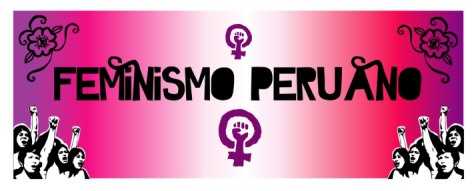Valley of the Sex Dolls: Our Post-Apocalyptic Future Is Grimmer Than You Thought
December 12, 2018
By Cory Morningstar and Forrest Palmer
The near-term and even more so post-apocalyptic future will be grim – a reflection of the neoliberal and patriarchal ideologies that will bring us face to face to a new form of mind pollution – a collective conditioning to the continued social degradation of women. With the rise and proliferation of plastic sex dolls and sexbots – our increasingly desecrated landscapes will soon be filling up with disposable bodies. Many dismembered and almost exclusively, female in form.“Patriarchal systems of capitalism and colonialism don’t recognize or value inherent worth in women’s bodies and the work women do, and instead commodify them. Once women’s bodies are objectified in this way, it positions violence against women as justified, embedding it into the fabric of society. Violence against women is and remains the bedrock for all other kinds of violence.” — Battered Women’s Support Services
Production of sex robots Abyss Realbotix
Industrial scale production is already here. Akin to a slaughterhouse, these life-like forms hang suspended from the ceiling on chains bound to the neck. Row upon row, the headless forms represent a new era in commodification, exploitation and ultimate degradation – the socially acceptable and financially profitable desecration of the female body.
The irony of the politically correct backlash toward plastic straws in contrast to the acceptable growing tsunami of plastic waste exclusively in female form – is lost. Silicone heads, torsos, breasts, arms, legs, removable vaginas, dirty and worn, will protrude from garbage bags and trash bins. A growing number of these forms will resemble dead children – the discarded remains of the anatomically-correct imitations of five year old girls, created exclusively for paedophiles. After all, according to the manufacturers, “It’s not worth living if you have to live with repressed desire.”
As a sign of the depravity of man, rivers, streams, lakes, oceans and all other places of waste disposal will overflow with plastic corpses that grossly mimic the female form. The sheer abundance of female bodies floating face down – or face up – will become so commonplace, an already desensitized society will become even more indifferent to the grotesque spectacle. Left solely to the machinations of men, female body parts fill up landfills by the tens of thousands – to such an extent – real women will be indistinguishable from the plastic corpses, literally lost amongst the rubbish.
Above: Sex dolls assembly in Abyss Creations laboratory. Credit: Eduardo Contreras/San Diego Union-Tribune
Above slaughterhouse image. This was the first of six “related images” suggested by Google to the sex doll assembly photo above
The line between real – and plastic – will continue to blur until it disappears all together. The need to separate real and plastic becomes at first inconvenient, to then more difficult, to then most difficult, to finally, no longer necessary. This is the beauty of social engineering – a gradual but steady progression that goes undetected – thereby ensuring it’s eventual completion and success.
“This system of violence is called patriarchy, and over the past two thousand years it has come to rule most of the world. Patriarchal civilization is based on exploiting and consuming women, living communities, and the earth itself.” — Women’s Caucus, Deep Green Resistance
An old description for vulgar terms such as “fuck”, “shit” or “damn” is to describe them as “four-letter words”. Yet, there seems to not be a problem with one particular four letter word: rape. This is illustrated by the current preoccupation with sex dolls, where the object personifying the female body is sexually dominated and/or assaulted, yet can’t even speak or respond to “her” vile treatment. It demonstrates the indifference that is prevalent in most societies when it comes to rape of the female body, be it imagined – or real. Is there any greater reflection of this type of rape mindset than a man procuring a doll to have sex with whereby he can essentially control her every action without thought, participation, feeling and/or contribution to what should be a mutual act between willing partners?
And it is this mentality that has now completely enveloped the entirety of man’s existence, who has furthered his depravity by unleashing the same mentality onto the Earth herself.
The need to control, dominate and manipulate without a response from its victim is part of the euphoric experience of pilfering perpetual and increasing resources from that which he has no respect. The same euphoric feeling from raping the animated human body has extended to inanimate objects: sexbots, sex dolls and the Earth herself. She, being the Earth, provides all of the pleasures without any pangs of guilt in terms of the verbal and physical responses from an unwilling participant.
A sex doll and other rubbish litters Sincil Dike, 2018, (Image: Bill Brown)
Yet, the primary mistake of modern man is his false belief that the ongoing structural collapse is not a reactive expression by the Earth in direct response to his misdeeds. Although the Western edifice built off this centuries long and ever expansive rape is formidable, it is not affected to the same degree as the environmental victims in the Global South who fight to survive in far more vulnerable circumstances. However, the growing yet still imperceptible fissures continue to go unacknowledged by those in the most insulated parts of the world.
Juxtaposed with a rapidly warming planet, planetary environmental collapse and accelerated resource depletion – the ramifications of this cultural arrogance – is in the midst of unfolding. Blind to the sixth extinction event, now well underway, this grotesque waste of energy and resources is no match for the grotesque human reductionism that feeds the momentum for the furthering of collective human depravity and indifference.
[Cory Morningstar is an independent investigative journalist, writer and environmental activist, focusing on global ecological collapse and political analysis of the non-profit industrial complex. She resides in Canada. Her recent writings can be found on Wrong Kind of Green, The Art of Annihilation and Counterpunch. Her writing has also been published by Bolivia Rising and Cambio, the official newspaper of the Plurinational State of Bolivia. You can support her independent journalism via Patreon.]
[Forrest Palmer is an electrical engineer residing in Texas. He is a part-time blogger and writer and can be found on Facebook. You may reach him at forrest_palmer@yahoo.com.]
























